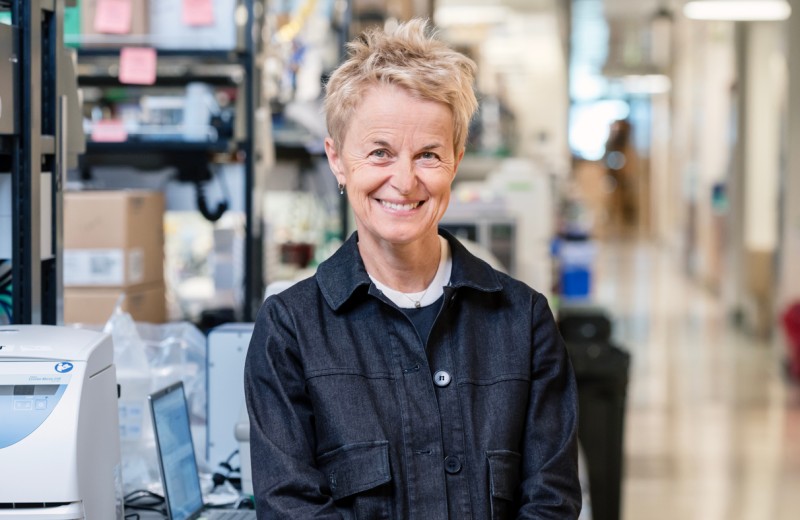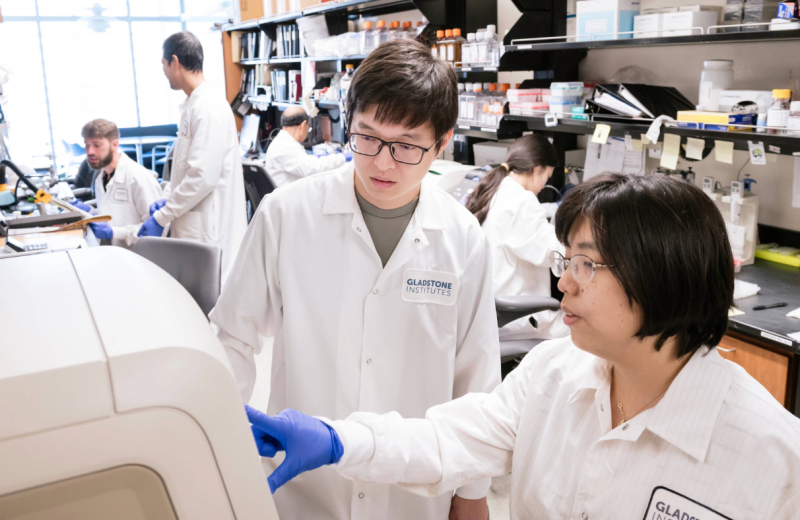Gladstone NOW: The Campaign Join Us on the Journey✕
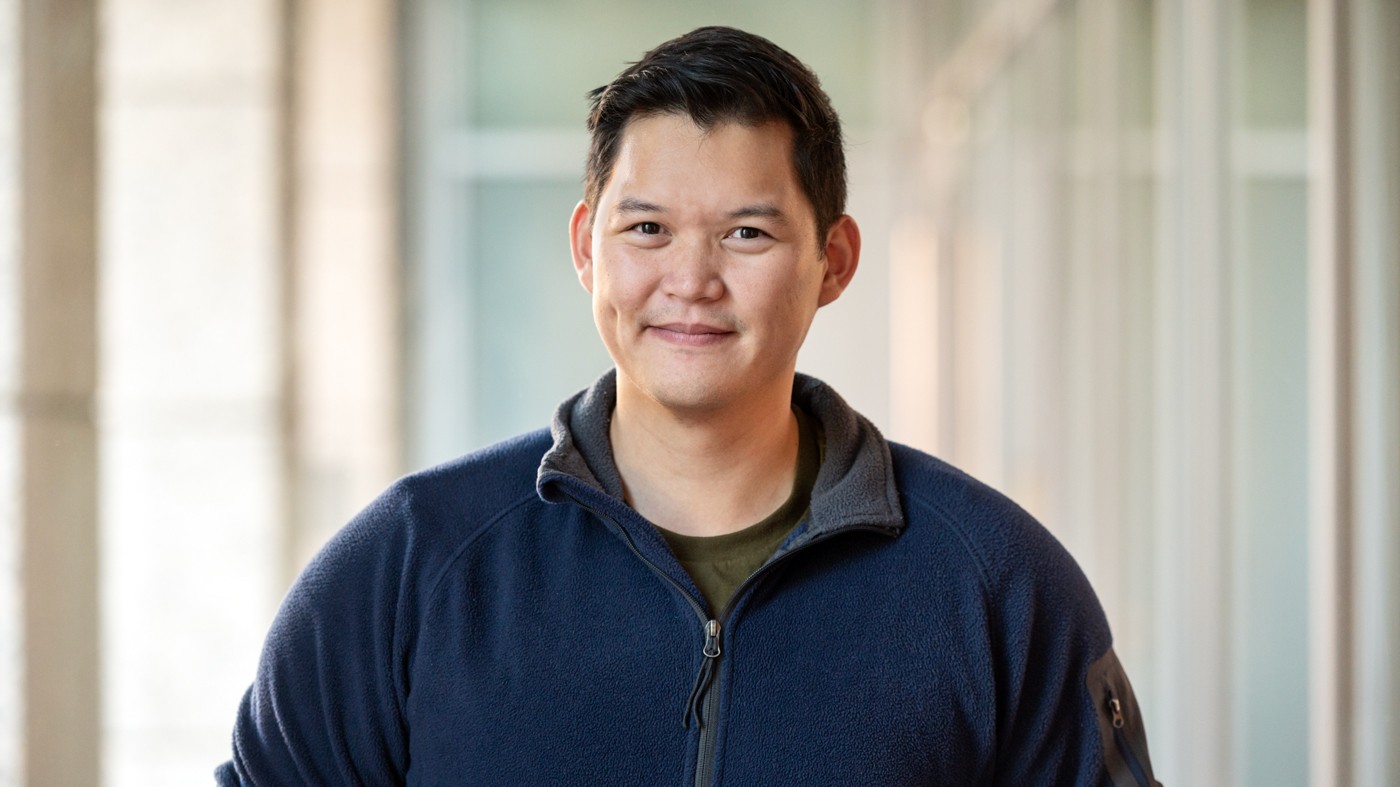
Andrew C. Yang joins Gladstone to decode the cross talk between the brain and body in aging and neurodegeneration
For decades, many scientists have described the blood-brain barrier—a tight network of cells that separates the brain from the blood—as a nearly impenetrable border wall. But Andrew C. Yang, PhD, who is joining Gladstone Institutes as an assistant investigator, thinks there’s more to it than that. He likens the blood-brain barrier to a family home.
“Your home has physical walls to form a barrier from the environment, but it also has windows and doors to let you bring in groceries and take out trash, and Wi-Fi so you can communicate with the outside world,” says Yang, who is also an assistant professor in the Departments of Neurology and Anatomy at UC San Francisco (UCSF). “I think we’ll come to appreciate that, similarly, the blood-brain barrier maintains a dynamic and sophisticated dialogue with other parts of the body.”
Yang’s research revolves around understanding how the blood-brain barrier may be more than its name implies. He wants to understand the rules that govern how the blood-brain barrier controls the movement of cells and molecules in and out of the brain, and how it becomes dysfunctional with age and disease. His research could inform the design of new drugs that can efficiently cross the blood-brain barrier, a current impediment to treating many brain conditions.
“Deciphering how the rest of the body communicates with the brain could enable new ways to combat brain aging and neurodegeneration,” says Lennart Mucke, MD, director of the Gladstone Institute of Neurological Disease. “I am delighted that Andrew is joining us to pursue this important quest.”
In January 2024, Yang will move his lab to the Gladstone Institute of Neurological Disease after having spent nearly 2 years at UCSF as a Sandler Faculty Fellow.
An Engineering Mindset
Yang didn’t always want to study the brain. As a boy growing up in Los Angeles and exceptionally tall for his age, he was obsessed with basketball—he played it, watched it and even hid basketball magazines inside textbooks during class. Then, a physics teacher encouraged him to consider a career in science. He became interested in physics and aerospace engineering, and studied mechanical engineering at the Massachusetts Institute of Technology.
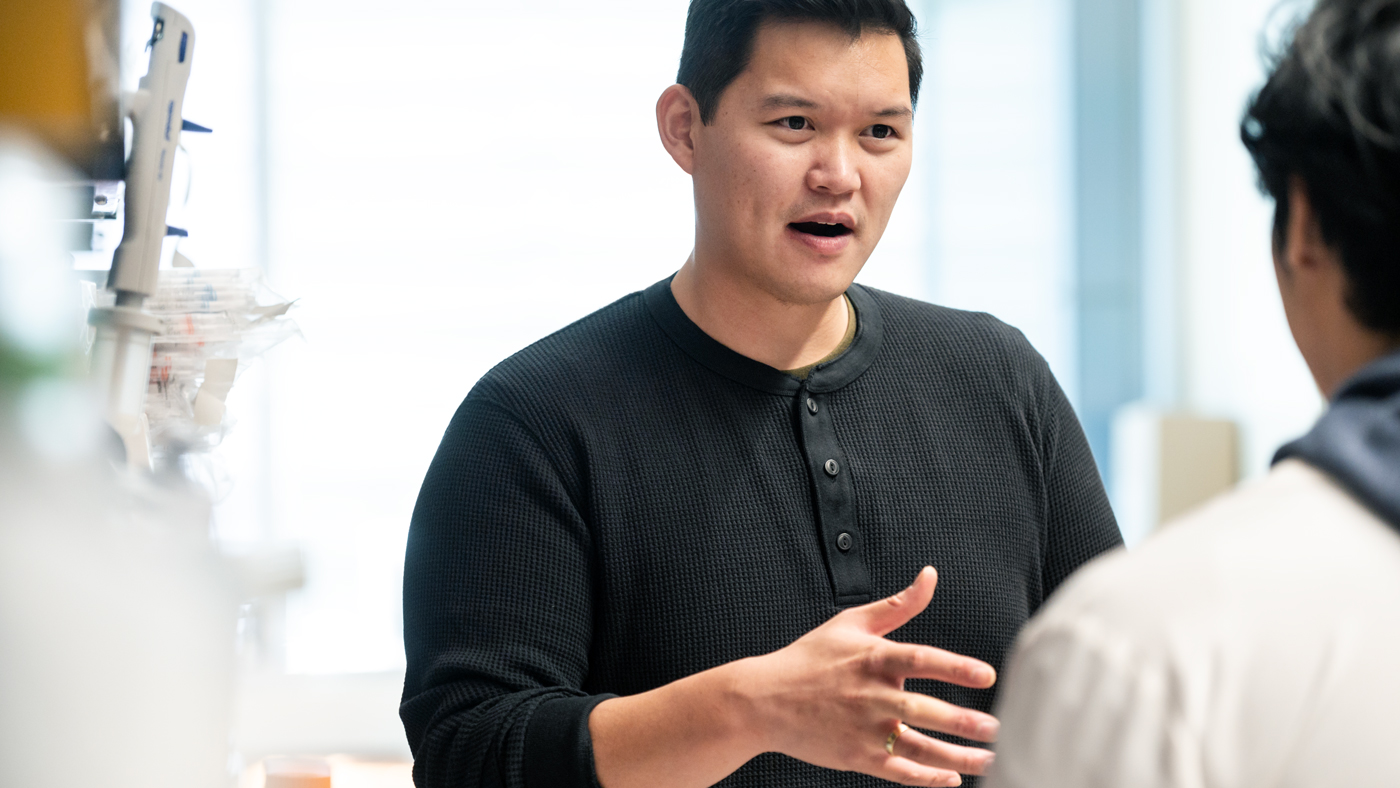
Yang and his colleagues assembled the first atlas of all the cells of the human blood-brain barrier and defined the molecular properties of each cell type.
After graduation, he explored careers in business and in policy, working at the White House for a short time before realizing he wasn’t cut out for politics. Then, Yang’s dad was diagnosed with dementia at a relatively young age.
“It was a big wake-up call for me,” says Yang. “For the first time, it gave me an ambition bigger than myself. I found something where, even if I spent my life working on it and failed, it would be worth it. I wanted to contribute creatively as a neuroscientist.”
Yang began a graduate program at Stanford University and joined the neuroscience lab of Tony Wyss-Coray, PhD, a professor who originally trained in Mucke’s lab at Gladstone. While at Stanford, Yang’s engineering mindset helped shape his interests even further.
“Once I got into the lab, I realized the field of dementia was huge,” Yang says. “In engineering, you often start analyzing a problem by looking at the boundary conditions. So I thought, why don’t I study what’s going on with the unique boundary of the brain—the blood-brain barrier?”
An Unexpected Flow of Proteins into the Brain
In Wyss-Coray’s lab, Yang helped develop chemical biology approaches to track the movements of thousands of molecules across the blood-brain barrier. He and his colleagues first observed an unexpectedly high traffic of proteins, and then started to see hints about how this traffic is controlled dynamically by the blood-brain barrier and how it changes with age.
Building upon prior studies, Yang further revealed that the blood-brain barrier regulates brain inflammation, both by responding to and by relaying cues from other organs to the brain. These findings suggest that protein traffic and communications across the blood-brain barrier are important features of brain health.
Yang and his team are now testing the hypothesis that brain health is maintained not just by the blood-brain barrier’s relative impermeability, but also by specific routes of blood-to-brain and brain-to-blood communications that are actively facilitated by this “barrier.”
“If we can understand these routes of communication, it could point the way toward new drug delivery strategies for the brain,” he says.
Assembling an Atlas
At the time Yang was completing his graduate studies, it remained difficult to identify individual proteins crossing the blood-brain barrier. So, he developed a new method of processing brain tissue to isolate blood-brain barrier cells for detailed study. Using that technique, he assembled the first atlas of all the cells of the human blood-brain barrier and defined the molecular properties of each cell type.
“My engineering training helped me appreciate the power of novel technologies in opening new frontiers in science and new ways of thinking about existing problems,” he says. “It was rewarding to apply that to a biological question and end up with important findings.”
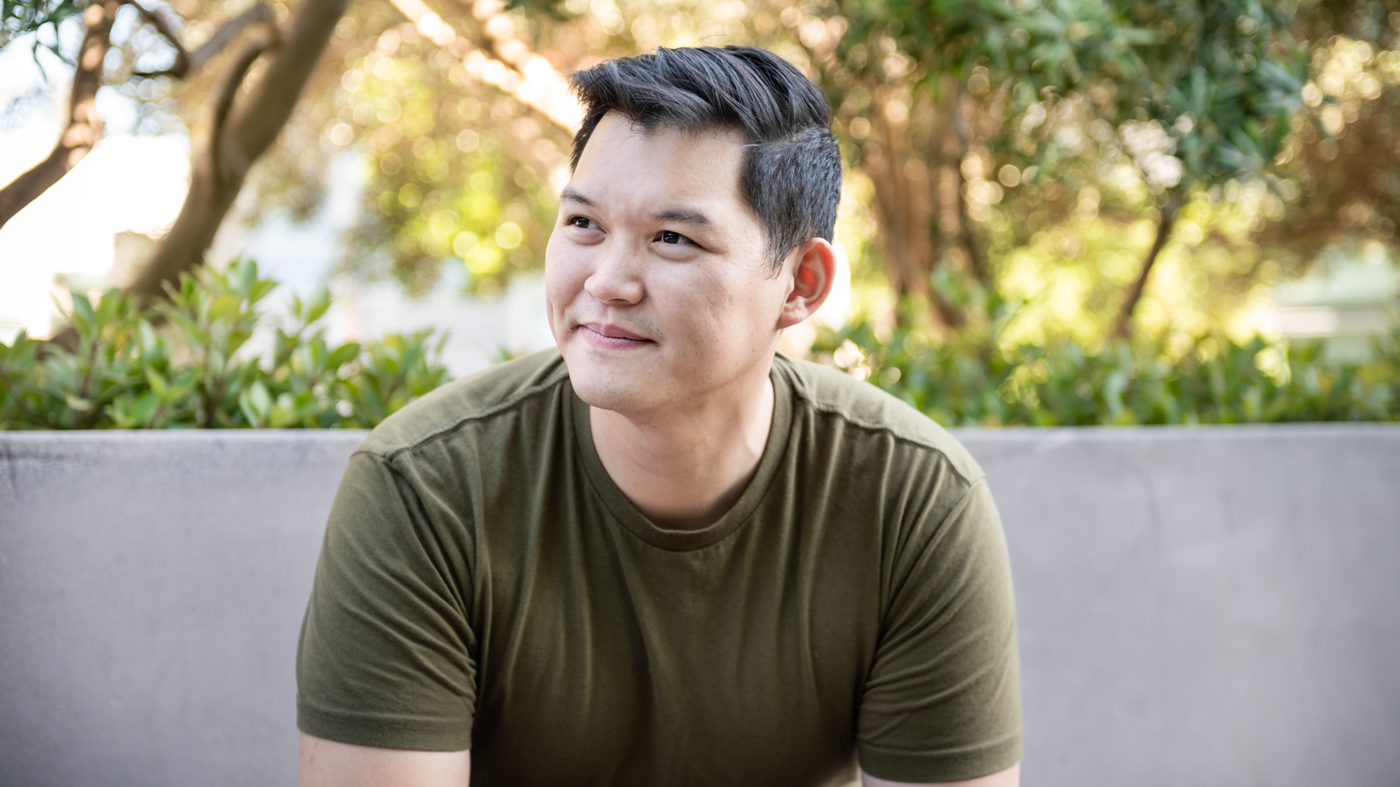
Yang is exploring molecular changes in the blood-brain barrier under different conditions, from healthy brain aging to neurodegenerative disease.
Using the new atlas, Yang and his colleagues found that the human blood-brain barrier is quite different from that of the mouse. This observation has important implications for how drugs aimed at the brain are tested in animals; a drug that makes its way through the mouse blood-brain barrier may not be able to cross the human blood-brain barrier.
Yang’s research also revealed that more than 30 of the top 45 genes related to Alzheimer’s disease risk are expressed in human blood-brain barrier cells, suggesting these cells may have important roles in neurodegeneration. At Gladstone, his lab will begin to work through that list to determine the functions of each of these genes and the ways in which they might modify disease or inform new therapies.
Implications for Brain Disease
“Now that we have an initial atlas, we can begin to explore molecular changes in the blood-brain barrier under different conditions, from healthy brain aging to neurodegenerative disease,” Yang says. “If we’re successful in understanding the rules that govern what can cross the blood-brain barrier, we should also be able to design drugs that can get across.”
Yang envisions being able to one day engineer antibodies or immune cells that can permeate the brain to address neurological diseases. He also imagines the development of a blood test to detect chemical signals from the blood-brain barrier circulating through the body, which could enable the diagnosis of brain disease before behavioral or cognitive symptoms arise.
“Andrew’s work will open many doors in our field,” says Gladstone Senior Investigator Katerina Akassoglou, PhD, a pioneer on the role of the blood-brain barrier in inflammation and tissue repair, and director of the Gladstone-UCSF Center for Neurovascular Brain Immunology. “I’m looking forward to exciting research from his laboratory and new technologies to study the important role of the blood-brain barrier in neurological conditions.”
At Gladstone, Yang is looking forward to collaborating with researchers across neuroscience, immunology, and data science as he tackles the large questions of how the blood-brain barrier relates to disease.
“I chose Gladstone for two main reasons: the people and the focus on disease, which has a strong personal meaning for me,” says Yang. “I want our work to matter for patients.”
“I dream that 30 years from now, I can hold up a vial containing a therapy, and I can say ‘I contributed to that and made a real impact on people’s lives,’” he adds. “I think the environment at Gladstone is thoughtfully designed to help us achieve just that.”
For Media
Julie Langelier
Associate Director, Communications
415.734.5000
Email
About Gladstone Institutes
Gladstone Institutes is an independent, nonprofit life science research organization that uses visionary science and technology to overcome disease. Established in 1979, it is located in the epicenter of biomedical and technological innovation, in the Mission Bay neighborhood of San Francisco. Gladstone has created a research model that disrupts how science is done, funds big ideas, and attracts the brightest minds.
About Andrew Yang
Andrew Yang, PhD, is an assistant investigator at Gladstone Institutes, and an assistant professor in the Departments of Neurology and Anatomy at UC San Francisco (UCSF). Yang earned a BS in mechanical engineering and materials science from the Massachusetts Institute of Technology and a PhD in bioengineering from Stanford University, where he trained in the neuroscience laboratory of Gladstone alumnus Tony Wyss-Coray. He joined UCSF as a Sandler Faculty Fellow in the Bakar Aging Research Institute and the Department of Anatomy in January 2022, and Gladstone in 2023.
Yang applies his training in engineering and his curiosity about neuroscience toward understanding the meaning, mechanisms, and therapeutic potential of protein and immune cell messages at the critical interface where the brain interfaces with the blood. His research has shown an unexpected degree of communication across the blood-brain barrier and has revealed a critical role for this barrier in the development of Alzheimer’s disease.
Want to Join the Team?
Our people are our most important asset. We offer a wide array of career opportunities both in our administrative offices and in our labs.
Explore CareersOne Person’s Final Gift to Science Gets Us Closer to an HIV Cure
One Person’s Final Gift to Science Gets Us Closer to an HIV Cure
A new documentary follows Jim Dunn’s end-of-life decision to donate his tissues to HIV research.
Institutional News HIV/AIDS Infectious Disease Roan LabBeyond Viruses: Expanding the Fight Against Infectious Diseases
Beyond Viruses: Expanding the Fight Against Infectious Diseases
The newly renamed Gladstone Infectious Disease Institute broadens its mission to address global health threats ranging from antibiotic resistance to infections that cause chronic diseases.
Institutional News News Release Cancer COVID-19 Hepatitis C HIV/AIDS Zika Virus Infectious DiseaseFueling Discovery at the Frontiers of Neuroscience: The NOMIS-Gladstone Fellowship Program
Fueling Discovery at the Frontiers of Neuroscience: The NOMIS-Gladstone Fellowship Program
The NOMIS-Gladstone Fellowship Program empowers early-career scientists to push the boundaries of neuroscience and unlock the brain’s deepest mysteries.
Institutional News Neurological Disease Mucke Lab NOMIS


